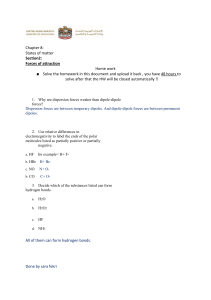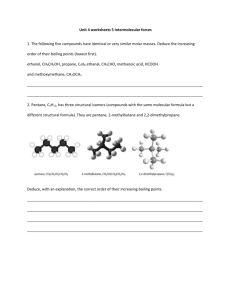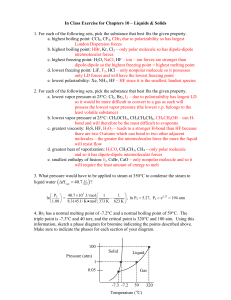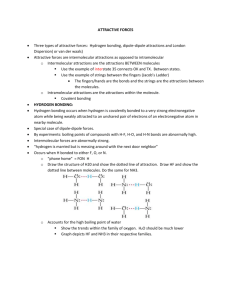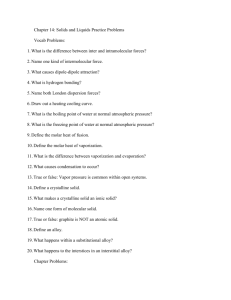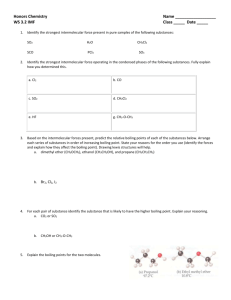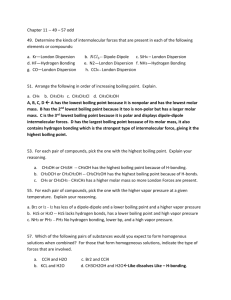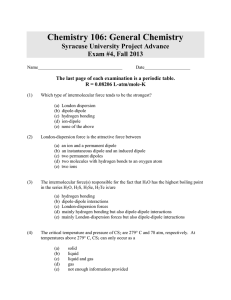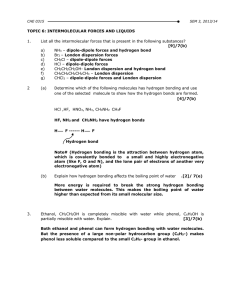Chemistry Worked Examples: Intermolecular Forces & Properties
advertisement
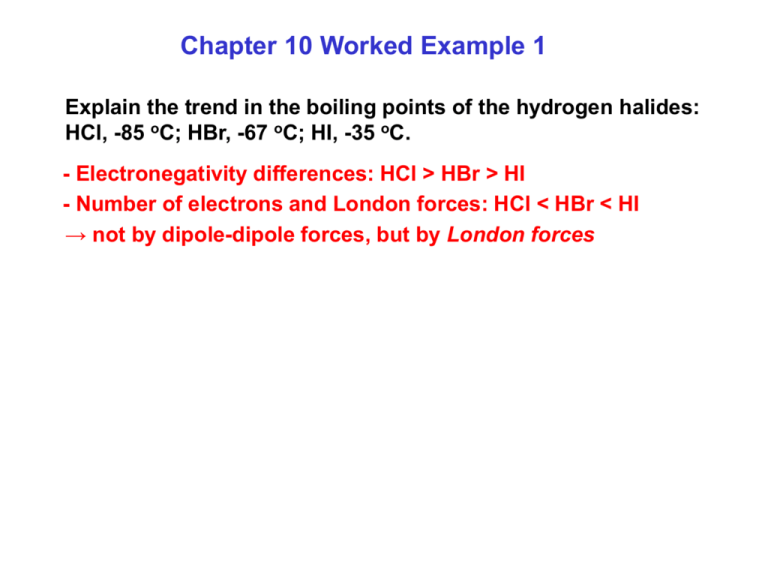
Chapter 10 Worked Example 1 Explain the trend in the boiling points of the hydrogen halides: HCl, -85 oC; HBr, -67 oC; HI, -35 oC. - Electronegativity differences: HCl > HBr > HI - Number of electrons and London forces: HCl < HBr < HI → not by dipole-dipole forces, but by London forces Chapter 10 Worked Example 2 Account for the trend in boiling points of the noble gases, which increase from helium to xenon. Solution In the noble gases, only London forces need be considered: These increase as the number of electrons increases (size of the atom increases): He (2) B.Pt Ne(10) Ar(18) Kr(36) Xe(54) Chapter 10 Worked Example 3 Which of the following molecules can take part in hydrogen bonding with other molecules of the same compound: (a) CH3OH; (b) PH3; (c) H-O-Cl? Solution (a) and (c), since these both have a H-O covalent bond: CH3 H O H 3C H Cl H O O Cl H O (most likely) Chapter 10 Worked Example 4 Identify the kinds of intermolecular forces that might arise between molecules of each of the following substances: (a) NH2OH; (b) CBr4; (c) H2SeO4; (d) SO2 Solution (a) (b) (c) (d) London forces, dipole-dipole forces, hydrogen bonding London forces London forces, dipole-dipole forces, hydrogen bonding London forces, dipole-dipole forces Chapter 10 Worked Example 5 Suggest, giving reasons, which substance in each of the following pairs is likely to have the higher normal melting point (Lewis structures may help your arguments): (a) HCl or NaCl; (b) C2H5OC2H5 (diethyl ether) or C4H9OH (butanol); (c) CHI3 or CHF3; (d) C2H4 or CH3OH. Solution Chapter 10 Worked Example 6 Which will have the higher boiling point, 1,1-dichloroethene or t rans-1,2-dichloroethene? Solution 1,1-dichloroethene is polar, whereas tr ans-1,2-dichloroethene is nonpolar: Cl H C Cl Cl H C C H H C Cl Hence, dipole-dipole (as well as London) forces exist in 1,1-dichloroethene, giving it the higher boiling point. Chapter 10 Worked Example 7 Predict how each of the following properties of a liquid varies as the strength of intermolecular forces increases and explain your reasoning: (a) boiling point; (b) viscosity; (c) surface tension. Solution
